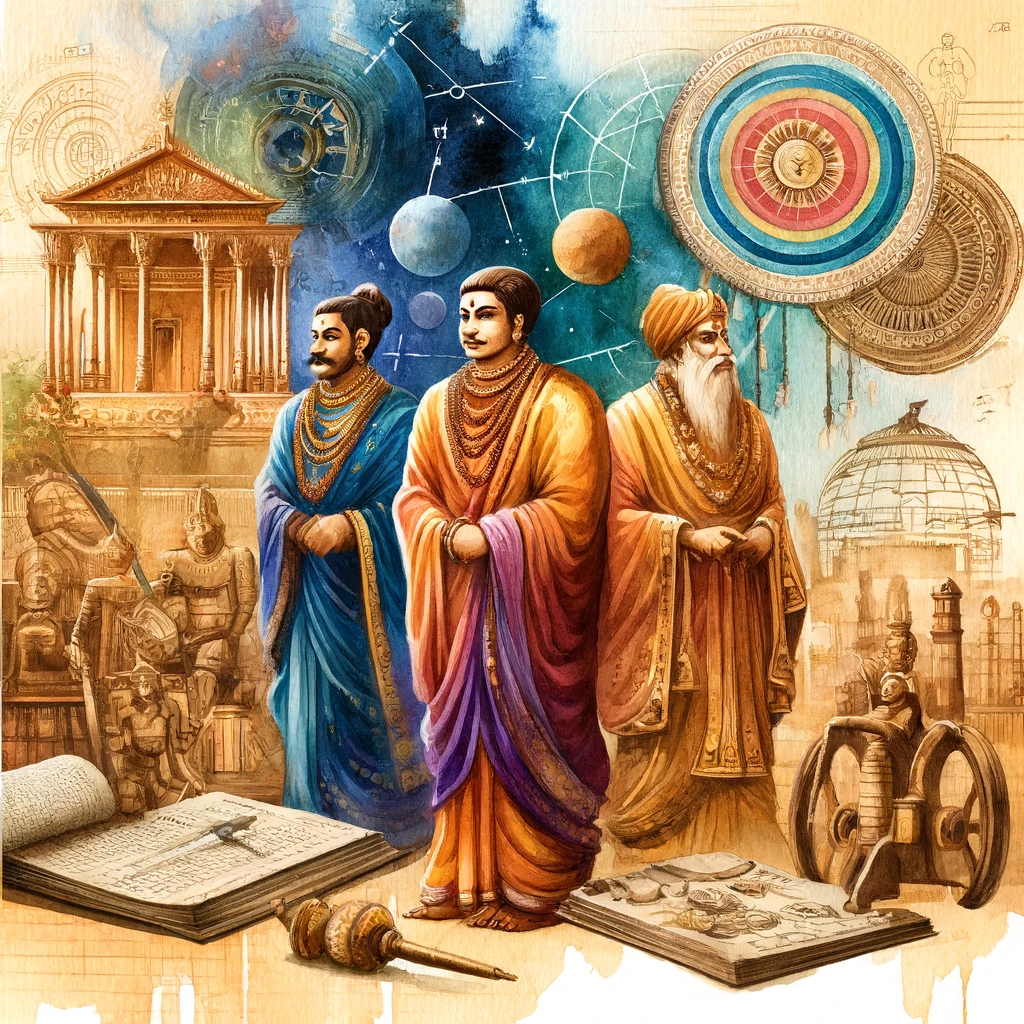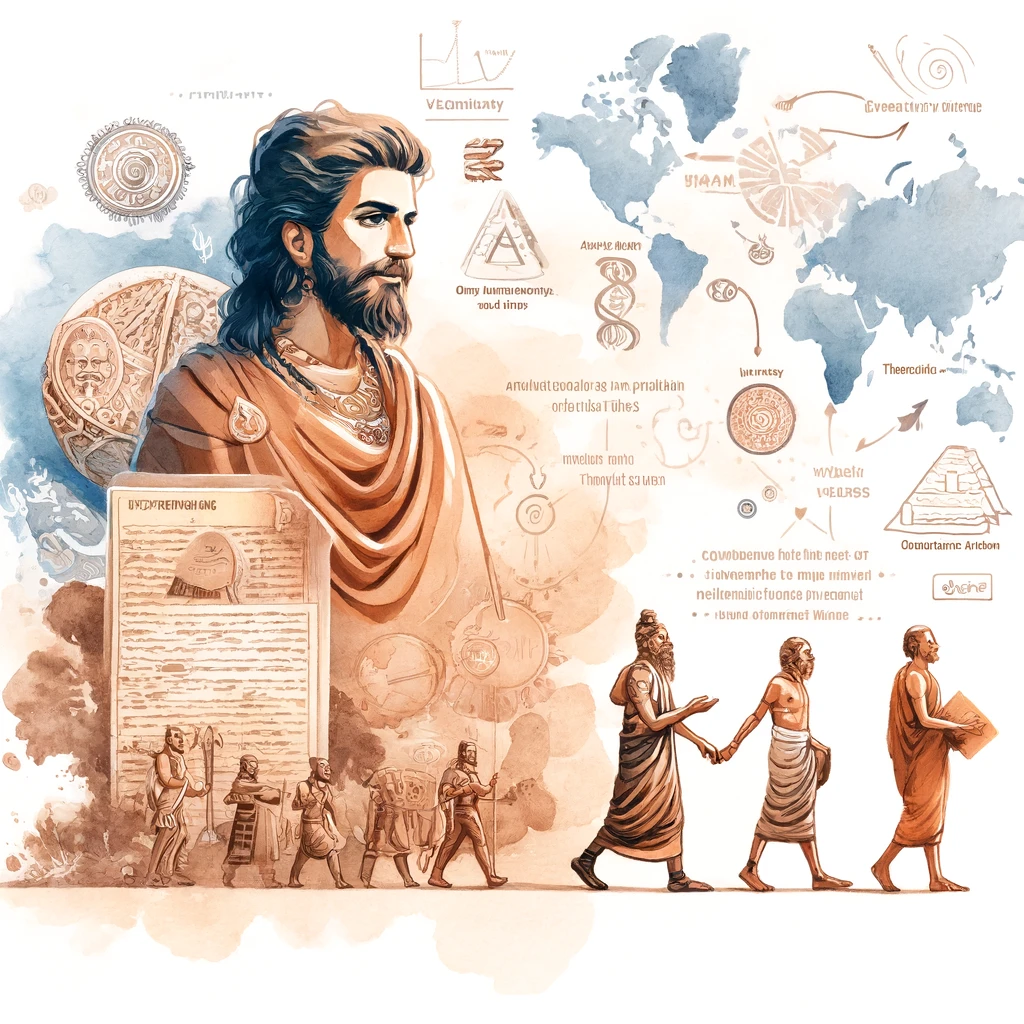The Gupta Empire, which flourished between the 4th and 6th centuries CE, is often referred to as the “Golden Age of India” due to its extensive achievements in various fields such as science, mathematics, astronomy, religion, and philosophy. The political history of the Gupta Empire is marked by the reigns of three major rulers: Chandragupta I, Samudragupta, and Chandragupta II.

Gupta Dynasty Rulers
Chandragupta I (c. 319 – 335 CE)
Chandragupta I is considered the founder of the Gupta Empire. He ascended the throne around 319 CE, marking the beginning of the Gupta era. His marriage to Kumaradevi, a princess of the Licchavi clan, significantly strengthened his political power and extended his influence in the Ganges region. This strategic alliance helped him consolidate and expand his kingdom.
Samudragupta (c. 335 – 380 CE)
Samudragupta, the son of Chandragupta I, is one of the most celebrated rulers in Indian history. Known for his military prowess and diplomatic skills, he conducted numerous campaigns across India. His conquests are extensively detailed in the Allahabad Pillar inscription, which lists his victorious campaigns in northern, central, and southern India. Samudragupta adopted a policy of “dharmavijaya” (conquest for righteousness), often reinstating defeated kings as tributary rulers. His reign saw the expansion of the Gupta Empire to its zenith, covering a vast part of the Indian subcontinent.
Chandragupta II (c. 380 – 415 CE)
Chandragupta II, also known as Vikramaditya, succeeded Samudragupta and continued the expansion of the Gupta Empire. His reign is noted for consolidating the empire and maintaining stability and prosperity. Chandragupta II defeated the Shakas in western India, thereby annexing the regions of Gujarat, Saurashtra, and Malwa into the Gupta Empire. This victory opened important trade routes to the Western world and established Ujjain as a prominent commercial and cultural center.
Gupta Dynasty Administration and Governance
The Gupta administration was marked by efficiency and organization. The central authority was strong, but local administration enjoyed a significant degree of autonomy. The empire was divided into provinces called “Bhukti,” which were further divided into districts called “Vishayas.”
Central Administration
- The king was the supreme authority and played an active role in administration. The Gupta kings assumed grandiose titles such as “Maharajadhiraja” (King of Kings) and “Paramabhattaraka” (Supreme Overlord).
- The council of ministers, known as “Mantriparishad,” assisted the king in administrative matters. The members of this council were often chosen from among the royal family and trusted nobles.
Provincial Administration
- Provinces (Bhuktis) were governed by “Uparikas,” appointed by the king. They were responsible for maintaining law and order, collecting taxes, and implementing the king’s directives.
- Districts (Vishayas) within the provinces were administered by “Vishayapatis.” They were responsible for local administration, including revenue collection and justice.
Local Administration
- Villages were the smallest administrative units and were largely self-governed. Village elders or headmen managed local affairs and resolved disputes.
- Towns had a similar structure, with guilds and local assemblies playing a significant role in administration and governance.
Revenue System
- The Gupta economy was primarily agrarian, with agriculture being the main source of revenue. Taxes were levied on land and agricultural produce.
- Trade and commerce also contributed significantly to the state revenue. The Gupta period saw the proliferation of internal and external trade, facilitated by a stable and prosperous economy.
Judicial System
- The Gupta judicial system was well-organized, with a hierarchy of courts to deal with different levels of disputes. Village councils and town assemblies acted as local courts for minor disputes.
- More serious cases were referred to the provincial courts or the king’s court.
Conclusion
The political stability and efficient administration during the Gupta period laid the foundation for a prosperous and culturally rich era in Indian history. The achievements in art, literature, and science during this period are a testament to the effective governance and enlightened policies of the Gupta rulers. Read more on Ancient History here.


